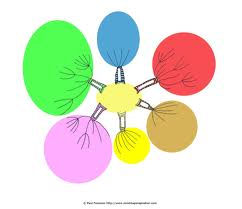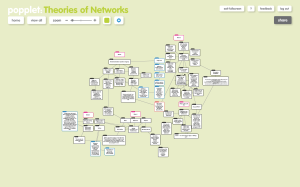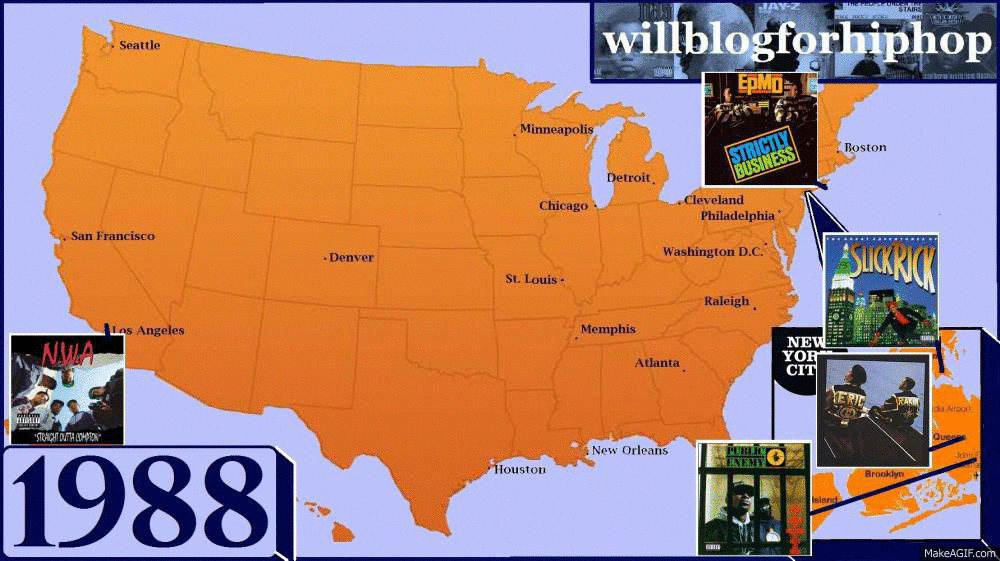Scaffolding Synthesis: The Cypher as Network
Rhetorical Situation Theory, Genre Theory, and CHAT
Theories
Which 2 – 4 theories are you choosing and why?
For the Synthesis project, my object of study is the hip hop cypher. This project will address the question “Why is studying my OoS useful to English Studies?” To do this, I plan to synthesize theories that focus on rhetoric and activity. I think these areas are useful in addressing ways in which the cypher can be used within rhetoric and composition in regards to pedagogy, argumentation, literacy, and cultural studies. The theories I have chosen to utilize for this project are:
Rhetorical Situation Theory–This theory will allow me to address the cypher’s role and hip hop and hip hop’s history as a social and political movement. Although it is currently mainstream, hip hop’s history is rooted in resistance, subculture, and revolution movements. This theory will allow an examination of the social context in which hip hop, and thus the cypher, was born. In addition, difference (Biesecker) and exigence (Bitzer) provide a space to discuss the interactive nature of hip hop and hip hop’s history of responding to social issues, respectively. These theories could also illuminate the role of audience in the cypher. The connections between the exigence, rhetorician, audience, and the rhetoric can parallel the connections between the participants in hip hop culture, the social problems/issues, and the discourse created within the culture to maintain positions within the community and push against the oppression from outside the community.
CHAT–Cultural Historical Activity theory will allow me to extend the work of rhetorical situation theory by providing a wider and more nuanced look at the activity within the cypher. Through CHAT the improvisation, spontaneity, and style expressed within the cypher can be addressed. The socialization aspect of the theory is useful to examine performance on the local level (role in the neighborhood/community) and cultural level (role in hip hop culture). The goal of the cypher is to provide a space for training, knowledge construction, entertainment, self expression, community building, and competition. The layers of literate activity work well for examining the various elements of the cypher.
Genre Theory (specifically, Bazerman’s Speech Acts)–Hip Hop and cyphers have been examined as social, cultural, and political movements. However, there has been little done to examine genre in Hip Hop. Hip Hop is made of four elements (rapping, djing, emceeing, and graffiting). If the cypher is thought of as a genre, each performance created in the cypher could be seen as a speech acts. This perspective, similar to CHAT, is useful for examining the cypher as a genre system within the larger activity system of hip hop. Bazerman’s focus on the “use [of ] texts to create new realities of meaning, relation, and knowledge” provides a way to address the cyphers role in organizing and creating community, disseminating information, and constructing knowledge. There is a hierarchical nature to cypher, which is not often illuminated; however, Bazerman’s human activity allows for an examination of hierarchy within the layers of the cypher.
How are they similar enough that you can justify getting them to work together?
As mentioned in the short introduction, these theories provide a focus on rhetoric and activity that I feel are important for examining the benefits of the cypher in regards to English Studies. Rhetorical Situation Theory, Genre Theory, and CHAT all provide a way to discuss rhetoric and the production and movement of information. This is important for English studies as we move toward a more networked classrooms and teach students whose lives are digitally mediated. They will need the ability to think critically about the production and movement of information. The theories all focus on activity; literate activity in CHAT and human activity in Bazerman. Also, rhetorical situation theory addresses activity in the sense that rhetorical discourse starts in response to a problem in order to cause action on the part of the audience. These three theories work together in providing a way to look at the creation, movement, and impact of activity within the cypher.
How do they fill each other’s gaps?
Rhetorical situation theory and genre theory deal with the origin or production of actions. CHAT provides a focus on literate activity and social context, which rhetorical situation allows, but genre theory does not. Moreover, CHAT allows for a discussion of all the elements of the cypher, while the other two theories do not allow for such an examination. Whereas, rhetorical situation theory can allow for a discussion of the meaning and audience, CHAT allows for a discussion of the activity within a larger context in regards to the literate activities role in functional systems, such as institutions and communities.
My Position as a Scholar
How do these theories align with how you position yourself as a scholar?
In regards to scholarship, my goal is to bridge my two worlds together. I am a member of the hip hop community and the academic community. The structure, organization, and belief system of these two groups are wildly different, if not polar opposite. However, I think that the link between the two spaces is dialogue. Both groups emphasize the generation of knowledge and the advancement of the community through conversation. The academy has the concept of the Burkean Parlor. Hip Hop has the cypher. It is my aim to use these two conceptual spaces and ideas as a bridge to move scholarship between the two communities. I believe that scholarship should move from within the academy to outside of the academy. What I mean by this is that there should be practical application, action, or activism. One part of this that is important to me is making scholarship accessible to an audience beyond academics. I think this is important if the people/groups/communities, especially those historically marginalized, oppressed, and disenfranchised, should be able to participate in the conversations. Scholarship that is not accessible outside of the academic community is in a sense preaching to the choir. This does help to advance thought within the academic community, but it should also help to advance thought and enlighten the communities being studied and examined. The goal is to spark debate, raise awareness, encourage critical thinking. Each of the chosen theories, I feel, can be easily adapted for an audience outside of the academy. In addition, their focus on action in regards to production and movement of information parallels my focus on the movement of scholarship. I feel that an understanding of how and why things are produced, how and where they move, and in what context are important when working towards scholarships that works within the boundaries of two disparate groups. These questions and their answers can provide insight into hip hop culture, especially the cypher, which is a little known aspect of hip hop culture. These insights can further hip hop scholarship in the area of hip hop education, which is a growing area of education in urban schools and non-profit organizations that serve low-income and/or minority areas. Genre theory focuses on agreed upon patterns that enable action. Rhetorical Situation theory focuses on the acts of the rhetor and/or the audience to make meaning and effect change/persuade. Finally, CHAT is about rhetorical activity. These theories align with my belief that the movement and exchange of information is key to knowledge construction. They also align with my personal goal of bridging seemingly opposite communities.
How do these theories align with your own biases and background (the reason you came to this project in the first place)?
I came to this project because my previous object of study did not stand up well as a network. Most of my research has always fallen within hip hop, cultural studies, or both. So, it made sense for my next object of study to fall somewhere within those two areas. Much of my other work in hip hop scholarship deals with bridging rhetoric and hip hop and exploring questions of authenticity, gender, sexuality, and black identity in hip hop culture. I have also explored African diaspora and pedagogy in connection with hip hop. From this perspective, my bias is that I feel that hip hop is significant to the academy. I think it is culturally significant and honestly, more relevant than many of the other subjects we are required to study. Using rhetoric, through Bitzer, Vatz, Biesecker, and Prior et al’s use of CHAT, allows me to connect hip hop with something that is already recognized by the academy as legitimate.
Another bias, I have is that I privilege the “real” world over the academy. What I mean by this is that I think theory is valuable in all aspects of life. In reality theory is philosophy, something we all have. However, I feel that scholarship is only significant if it moves from mental practice and showcase to action or activism. These theories align with my bias by being accessible or easy decoded. Though the term rhetoric may be unfamiliar to some, the general idea or concept of rhetoric and persuasion is not. The term genre in the sense that it is use by Miller and Bazerman may seem foreign and first, but everyone is familiar with genres of music and movies. That can serve as the stepping stone by which to introduce genre theory to an unfamiliar audience. My scholarship, particularly hip hop scholarship, has to go beyond the academy. If it doesn’t, I, as a member of the hip hop community, will be selling out. I’m not “keeping it real” if I hit it big (PhD) and then go mainstream (only producing for outsiders). These theories, with their accessibility and focus on action/activity, allow me to be apart of the mainstream (the academy) while staying connected to my roots.
References
Bazerman Charles, “Speech Acts, Genres, and Activity Systems: How Texts Organize Activity and People.” Eds. Charles Bazerman and Paul A. Prior. What Writing Does and How it Does It: An Introduction to Analyzing Texts and Textual Practices. New Jersey: Lawrence Erlbaum Associates, 2004. Print.
Biesecker, Barbara A. “Rethinking the Rhetorical Situation from with the Thematic of ‘Differance’.” Philosophy & Rhetoric 22.2 (1989): 110-130. Print.
Bitzer, Lloyd F. “The Rhetorical Situation” Philosophy & Rhetoric. Special ed. Selections from Volume 1. 25.1 (1992): 1-14. Print.
Miller, Carolyn R. “Genre as Social Action.” Quarterly Journal of Speech 70 (1984): 151-167. Print.
Prior, Paul, et. al. “Re-situating and Re-mediating the Canons: A Cultural-Historical Remapping of Rhetorical Activity: A Collaborative Core Text. Kairos, 11.3 (Summer 2007). Web. 31 March 2014. Web.
Vatz, Richard E. “The Myth of the Rhetorical Situation.” Philosophy & Rhetoric. 6.3 (1973): 154-161. Print.






